A few things that I wonder about in Singapore:
a)How are the trains from different lines synchronised at MRT interchange stations to arrive in a manner that you get out off one to immediately walk into another?
b)How come the trees are all to a uniform trim & how come you don’t see them being trimmed?
c)How come a place so close to the equator manages to remain pest-free?
d)Precisely when in history did the national religion evolve to being shopping?
e)What did Orchard road look like before the malls were invented?
f)How come all sense of Singapore discipline breaks down the minute you enter Little India?
g)How does Mustapha do it – keep so many things under one roof at such prices?
h)When did the ‘can-la’ patois actually start?
i)Why did they build high rise condo’s with re-inforced concrete bomb shelters in each of the apartments? Further, in the eventuality of their actual use, how did they intend to get the people cooped up inside, down from the 40th floor, assuming that everything else got wiped out?
j)Why do they bother to publish such a thick newspaper?
k)How come there aren’t so many DVD rental places?
l)Do they seriously need to publish everything in 4 languages?
Monday, October 20, 2008
A trip down a 20 year old memory lane
I’m sure all of us have a memory lane. In fact, I think you end up collecting lanes as you grow older. Sometimes you get the opportunity to re-visit one of them. I had one such opportunity recently.
Two decades ago, my dad was posted to an assignment in Tokyo. I was 16 at that time & my sister was 19. This was the pre-liberalization times India. We were in school, and it was considered precarious for us to shift education systems. So, my parents decided to maintain 2 bases – one in Delhi & one in Tokyo. My mom would shuffle between the two places while we kids would be under the guardianship of my grand-parents. This was, I now realise, a very tough decision; nuances like being away from family & what it meant to my dad, how my mom must have felt thinking of two homes to manage (one remotely at any given time) – these were not apparent to me at that time.
As things panned out, my memories of Tokyo are made up from the 3 vacation visits I made at that time – 2 in summer & 1 in winter.
The first thing that I recall was the ‘Limuzine busu Narita’. My parents had already gone there & when I went I remember the precise instructions on where to find the Limo etc. Obviously I was deaf to a few minor details; I envisioned a stretch limo of some sorts, where all 3 of us would pile in & travel in western society luxury. I guess a steady diet of Richie-Rich comics aided this vision. We got out of the aircraft bleary eyed & joined a long queue at the futuristic looking Narita airport, all things steel & shiny under the white-light, clean lines, no dust anywhere. Finally I saw the limo – it was a big fat bus into which about 30 of us piled in after indicating our luggage which went into the belly of the bus. What a come down!
The disappointment was short-lived though. The bus moved faster than any privately owned vehicle back in India - we were one of the ‘privileged’ owners of an Amby Mark III, the fastest thing on 4 wheels in New Delhi; cross 60 kmph in it & you were guaranteed a cautionary command to slow down from the parents in the back seat; 70 & you got a pit-in-the-stomach feeling from the high probability that the car would fall apart any moment.
‘The Limu had 6 gears man’, I was to gush to my friends in school once I got back. We pulled out on to the highway & it was like being in a sci-fi movie; criss-crossing highways at several levels, smooth roads, many lanes, no honking, no cutting lanes, cars zipping past our ‘limuzine’ with ease. It took my breath away.
After 90 minutes we reached TCAT – Tokyo City Air Terminal, where we got off & got onto a cab with all our luggage for the ride home. Home was Homat Viscount – a 6 storeyed apartment complex in the Akasaka area. It was close to my dad’s office – he walked 20 minutes past the American embassy to it every day. On the other side was the newly built ANA hotel – 40 storey’s of glass, chrome & concrete – nothing like anything I had seen. It had escalators! The only other one I remember going up on till then was the one installed at the Taj Palace hotel; even that one was closely guarded by hotel minders to prevent us rustic Delhi-ites from joyously going up & down it repeatedly!
Homat was condominium living before they invented the term I think. It had central air-con, wall-to-wall carpeting, a huge fridge (which came in useful as mom packed it in with frozen idlis, rice, chapattis, sambhar, rasam on her trips), a washing machine & drier & a dish-washer. It overlooked office buildings on one side & a foliage covered hill on the other side. It was in the middle of the city yet completely quiet.
We didn’t have a car, so we walked about quite a bit, took the train. The standard landmarks to watch out for were (next to nothing in Tokyo was in English) the ANA hotel, the American embassy & the soba noodle joint, depending on which directions you were coming from. These were markers that guided us whenever we went out & ensured that we didn’t get lost coming home.
Well, 21 years later, I plan my trip to Tokyo again. I am advised by Tokyo office to take the airport ‘limu’ to the Westin hotel. I inquire, since I am new & uncertain, whether it would be better to take a cab instead for a couple of reasons; one I vaguely equated the ‘limu’ to non-business travel & two because I was wary of the red-eye flight I was taking. They got back indicating that the ‘limu’ would be 3000¥ & a taxi ride would be 70,000¥! End of argument!
So I board the A380 from Changi to Narita. That’s an adventure itself – I was really curious about the super-jumbo. As it turned out, it looked like a pregnant 747, took off a couple of hours late as the pilot tried - & I quote ‘re-booting the system’ - just before take-off to make sure that everything worked fine. It felt like any other aircraft I’d been in, though a bit quieter in my view.
We land at Narita & as I walk through the terminal I feel the sense of déjà vu growing inside me. Before I reach the ‘Limu’ counter I decide to visit the rest room.
Now, the toilets in Japan can be, to put it mildly, over-engineered. And to top it, you can’t read any of the instructions. I found myself in one of them. From the outside, it seemed like the place to go. Once I was inside, I found myself in a pretty large space, in what seemed to be a toilet for the handicapped (I wouldn’t really know because I’ve never been inside one – I still don’t mind you; this is hypothetical). There were all these handles on the side of the commode, which itself looked like as if it was a marvel of engineering. I was seized with a sense of panic – what if there were a line of wheel chair bound folks waiting outside who REALLY had to go? I would be depriving them & in some way be torturing them beyond belief. So I quickly used the facilities & cautiously opened the door with some nervousness; there wasn’t a soul & I exited quickly to much relief beyond the obvious!
The Limu counter was uneventful; got my ticket & waited outside at the appropriate stop. I was greeted with respectful bows & handed receipts for my luggage. When the Limu arrived I could almost bet that it was the same from 21 years ago! You see Japanese build things to last. It’s evident as you spend time in the place.
The Limu duly speeded off & once again I was on the maze of highways I remembered from long ago. Except that I wasn’t as goggle-eyed as before; over the years India has built its own wonders – expressways, bridges & fly-overs. But I did notice the little things; rust lines on some of the bridges, structures that could have done with a new coat of paint; all pointing to the economic stagnation that had gripped Japan the last 20 years I had read about. Mind you, nothing was crumbling; on the contrary, by India standards & even Singapore ones the infrastructure was great.
The Limu made its way to central Tokyo, through the huge urban sprawl that made up the mega-city. I could see that huge apartment blocks had come up here & there. Soon we snaked our way through parts of down-town Tokyo & I noticed again the small houses that stood on narrow streets – they were tiny but immaculate in the way they were at ease with the surroundings. Trees, neatly trimmed lined the roads. I realised that this was the city that Mumbai needs to emulate. ‘Send policy makers here rather than visit Singapore (a culturally sterile city) or Shanghai (not been there, but seems a different model) to see how to blend & develop existing residential areas with commercial areas’, I thought.
Finally reached the Westin & from my 16th floor window I had a wonderful view of downtown. And what’s more, I wasn’t too far away from memory lane either!
I made sure that I finished my work by 3.30 pm so as to make time for the visit. From the hotel I took a cab to the ANA hotel. Not only was the route feeling familiar, with its 3 level traffic, but even the cabs felt as if I had been in them before. And ANA was the same! I walked along the side of the building in the general direction of home, from memory. Strangely I didn’t have any of the uncertainty I normally felt in a new city. I’ve been settling into Singapore & I can tell you I felt uncertain whenever I ventured into a new street, for at least the first 2 weeks; but not here as I walked down this memory lane.
After about a 5 minute walk, I sensed that ‘home’ was close by. And there stood another marker – the soba noodle bar! I can’t be sure it was the same one, but in my eyes it sure did look the same. ‘Turn right here & home is up ahead’, my brain urged me. I walked on, excited, passing a couple of executives on a smoke break in front of pretty bushes. But Homat Viscount wasn’t there.
I called dad & mom & I could feel the excitement in their voices as I told them where I was; but alas no Homat.
I hung up & decided to go off to visit other places. But hey, having come so far I decided to investigate & have a look around. I found another place called Homat Viscountess, which seemed to have been a younger sister that came up after our time. At the corner of the street stood a huge 20 storey snazzy building, pretty eye-catching & definitely not there in my memory lane. Curious, I investigated & found a sign on the side that I recognised – it said Homat Viscount! It was in fact the same sign from 20 years ago. It seems the old small apartment block had been torn down & this new avatar had sprung up. Later I learnt from a web search that it ‘was the finest address for expat living in the heart of Tokyo’. As appa told me as I called him back excitedly, ‘finest then, finest even now’.
What next? I followed old instincts; ‘take a right at the end of the lane to go towards the embassy’. Yes, there it was. Only, a reflection of our times, instead of the discrete few Tokyo cops then, this time I was approaching a fortress with a platoon standing by.
I was signalled to walk across the streets & probably video-taped as I slowly walked by, crossed over & walked on towards another memory marker.
Again, it didn’t feel alien; I had walked these steps before. All the places from then flashed pass – Roppongi, the video rental store (would it now be a DVD store?), Tokyo tower, Akhihabara, Shinjuku station – which one should I seek out next? Getting on in the evening, I ruled out another taxi ride & settled on continuing my wanderings & decided to go to Tokyo tower. Instinctively I took the right’s & left’s, guided by memory, almost feeling my sister by my side as I strolled on, as we did all those years back. Reached Tokyo tower, went up the 2 observation decks, took photos on my N73 (no camera given the relocation packing).
Got back down & it was dark. I was tired & the travel, the time difference, the previous night’s sake top up was taking its toll & I decided to call it a day.
As I reflect back on my 2 day trip, there were a few more things that stood out about this fascinating city & its culture. Clearly a lot of things had remained constant over the years. Like the limited use of English in everyday life; like the TV, that showed American shows dubbed in Japanese; like the sumo channel; like the newpapers which were wider in the old fashioned way.
The Japanese are obsessed with quality. You can feel it as you move around Tokyo, in the way their city is built, in the variety that the super-markets stock. You can sense their fierce pride in their brands, silent but expressed everywhere; you will only find Japanese cars on the road, only Sony, Panasonic, Hitachi TV’s & electronic gizmos. I was pleasantly surprised to learn that in most household categories, the dominant players weren’t the usual MNC culprits (Unilever, P&G) but Japanese brands on account of their ‘superior technology, quality’ & (I suspect) cultural connect. Notable exceptions to this rule were Coke, Adams (the company that makes Clorets gum), Marlboro & more recently Apple (with only the Ipod) & Starbucks, with varying degrees of dominance.
What’s more I also learnt that the Japanese built & ran their business on the basis of what seemed to me their cultural identity imprinted all over their business philosophy. For example, Japanese companies hate losing market share. I know all companies hate to do so; but in my experience Western & Indian companies will not obsess about it to the point of bleeding money. But my colleagues in our business there told me that it’s a matter of prestige & loss of honour for a company to be seen losing share. So they react in crazy ways. Like our competitor there who has decided to reverse its declining share trend by giving more product at the same price! Btw, we are talking about a food category that has seen serious input cost inflation – it’s a suicidal move for the bottom-line. But maybe that’s precisely the point – our rival may be taking the honourable route & in a twisted way of thinking, its management is ‘atoning’ for the share loss in this way.
Another crazy thing – Japanese companies HATE to take up prices. Again, the fear of share loss looms large. So what do they do? They collaborate with their suppliers & together these guys tighten costs across the board helping to maintain prices. They figure out how to run their machines beyond their life-span, put off capital investments, focus instead on building scale to bring down unit costs. And when all else fails, accept a lower profit margin. Unthinkable in all the places I’ve worked in.
Japanese work culture is very hierarchical. Seniority matters more than anything else; I met guys much older than me who were still Brand Managers! And it was an acceptable career progression. Not many women in senior management, our MD their being the exception. What’s more, these guys work like crazy, 8 to 8, Monday to Saturday. Japanese men are so obsessed with work that it seems many of them face failing marriages AFTER retirement because they can’t handle being at home all day & being in the company of their wives, so habituated are they to going to office.
Two brands that are all the rage now are the Ipod & Starbucks. I asked my Japanese colleague what were the reasons for this? He said both were ‘aspirational’. Now, that can be a marketing euphemism for meaning ‘I really don’t know, but it’s all the rage now among consumers’. So I probed some more.
Apple emphasise on making break-throughs that focus on design. They try & succeed very well in the process, to make things very intuitive & always present you with something you haven’t experienced before but when you do, you are hooked. I think their aesthetic simplicity & intuitiveness appeals to the Japanese. Sure there are me-too’s, some pretty good one’s like Sony, but as long as Apple stays focused on design I think they are on a good wicket in Japan.
Starbucks – well, I think is a bit of a fad in Japan. I came across a coffee chain whose colours, façade, fonts all screamed Starbucks. Hell, their coffee beans were probably better! And they were popular because they had a smoking section inside the café.
As elsewhere, Starbucks has made the coffee bar into a kind of must-go hang-out joint, where a visit gives you instant membership into some kind of club that assures you that you are somehow doing the ‘cool’, ‘contemporary’ thing. The problem with is that sometimes, the first-mover often takes the high ground (pardon the pun) & puts up barriers to competition.
Which is why Starbucks nowadays has started pushing so many other ‘aspirational’ things in their shops – music, eats, home kits (which are rip-offs really – why on earth should I purchase a percolator or a press at 3 times the price I can get it elsewhere & what’s more, even then it won’t guarantee a great cup!). The one thing that could make a difference that others may struggle to emulate is organic. Though in Japan, even that is doubtful; Japanese have focused on pure & natural ingredients in their cuisine longer than anyone I guess so should be masters at it. I forecast a pretty bleak future for Starbucks in Japan, unless of course, they take over their competition!
As I rounded up this trip, I was struck by how life comes full circle. Now I was faced with dealing with some of the painful nuances that my parents dealt with all those years back – being away from family even for a few weeks & months is painful; the feeling of being away from home & missing the familiarity of friends, relatives, even domestic help. And mind you, nowadays you aren’t too far away from seeing an Indian face or removed from Indian culture pretty much anywhere you go.
Still, I enjoyed my trip down memory lane. I think of the many more lanes I have to re-visit at some point in time – Delhi, Mumbai, Bangalore, Kolkatta, even Kolhapur & Pondicherry, where some part of me has been shaped through some experiences & instances, sometimes alone & sometimes in the company of friends & family.
I look forward to them eagerly, because I know I won’t feel lost & will be guided to take all the right turns along the way.
Two decades ago, my dad was posted to an assignment in Tokyo. I was 16 at that time & my sister was 19. This was the pre-liberalization times India. We were in school, and it was considered precarious for us to shift education systems. So, my parents decided to maintain 2 bases – one in Delhi & one in Tokyo. My mom would shuffle between the two places while we kids would be under the guardianship of my grand-parents. This was, I now realise, a very tough decision; nuances like being away from family & what it meant to my dad, how my mom must have felt thinking of two homes to manage (one remotely at any given time) – these were not apparent to me at that time.
As things panned out, my memories of Tokyo are made up from the 3 vacation visits I made at that time – 2 in summer & 1 in winter.
The first thing that I recall was the ‘Limuzine busu Narita’. My parents had already gone there & when I went I remember the precise instructions on where to find the Limo etc. Obviously I was deaf to a few minor details; I envisioned a stretch limo of some sorts, where all 3 of us would pile in & travel in western society luxury. I guess a steady diet of Richie-Rich comics aided this vision. We got out of the aircraft bleary eyed & joined a long queue at the futuristic looking Narita airport, all things steel & shiny under the white-light, clean lines, no dust anywhere. Finally I saw the limo – it was a big fat bus into which about 30 of us piled in after indicating our luggage which went into the belly of the bus. What a come down!
The disappointment was short-lived though. The bus moved faster than any privately owned vehicle back in India - we were one of the ‘privileged’ owners of an Amby Mark III, the fastest thing on 4 wheels in New Delhi; cross 60 kmph in it & you were guaranteed a cautionary command to slow down from the parents in the back seat; 70 & you got a pit-in-the-stomach feeling from the high probability that the car would fall apart any moment.
‘The Limu had 6 gears man’, I was to gush to my friends in school once I got back. We pulled out on to the highway & it was like being in a sci-fi movie; criss-crossing highways at several levels, smooth roads, many lanes, no honking, no cutting lanes, cars zipping past our ‘limuzine’ with ease. It took my breath away.
After 90 minutes we reached TCAT – Tokyo City Air Terminal, where we got off & got onto a cab with all our luggage for the ride home. Home was Homat Viscount – a 6 storeyed apartment complex in the Akasaka area. It was close to my dad’s office – he walked 20 minutes past the American embassy to it every day. On the other side was the newly built ANA hotel – 40 storey’s of glass, chrome & concrete – nothing like anything I had seen. It had escalators! The only other one I remember going up on till then was the one installed at the Taj Palace hotel; even that one was closely guarded by hotel minders to prevent us rustic Delhi-ites from joyously going up & down it repeatedly!
Homat was condominium living before they invented the term I think. It had central air-con, wall-to-wall carpeting, a huge fridge (which came in useful as mom packed it in with frozen idlis, rice, chapattis, sambhar, rasam on her trips), a washing machine & drier & a dish-washer. It overlooked office buildings on one side & a foliage covered hill on the other side. It was in the middle of the city yet completely quiet.
We didn’t have a car, so we walked about quite a bit, took the train. The standard landmarks to watch out for were (next to nothing in Tokyo was in English) the ANA hotel, the American embassy & the soba noodle joint, depending on which directions you were coming from. These were markers that guided us whenever we went out & ensured that we didn’t get lost coming home.
Well, 21 years later, I plan my trip to Tokyo again. I am advised by Tokyo office to take the airport ‘limu’ to the Westin hotel. I inquire, since I am new & uncertain, whether it would be better to take a cab instead for a couple of reasons; one I vaguely equated the ‘limu’ to non-business travel & two because I was wary of the red-eye flight I was taking. They got back indicating that the ‘limu’ would be 3000¥ & a taxi ride would be 70,000¥! End of argument!
So I board the A380 from Changi to Narita. That’s an adventure itself – I was really curious about the super-jumbo. As it turned out, it looked like a pregnant 747, took off a couple of hours late as the pilot tried - & I quote ‘re-booting the system’ - just before take-off to make sure that everything worked fine. It felt like any other aircraft I’d been in, though a bit quieter in my view.
We land at Narita & as I walk through the terminal I feel the sense of déjà vu growing inside me. Before I reach the ‘Limu’ counter I decide to visit the rest room.
Now, the toilets in Japan can be, to put it mildly, over-engineered. And to top it, you can’t read any of the instructions. I found myself in one of them. From the outside, it seemed like the place to go. Once I was inside, I found myself in a pretty large space, in what seemed to be a toilet for the handicapped (I wouldn’t really know because I’ve never been inside one – I still don’t mind you; this is hypothetical). There were all these handles on the side of the commode, which itself looked like as if it was a marvel of engineering. I was seized with a sense of panic – what if there were a line of wheel chair bound folks waiting outside who REALLY had to go? I would be depriving them & in some way be torturing them beyond belief. So I quickly used the facilities & cautiously opened the door with some nervousness; there wasn’t a soul & I exited quickly to much relief beyond the obvious!
The Limu counter was uneventful; got my ticket & waited outside at the appropriate stop. I was greeted with respectful bows & handed receipts for my luggage. When the Limu arrived I could almost bet that it was the same from 21 years ago! You see Japanese build things to last. It’s evident as you spend time in the place.
The Limu duly speeded off & once again I was on the maze of highways I remembered from long ago. Except that I wasn’t as goggle-eyed as before; over the years India has built its own wonders – expressways, bridges & fly-overs. But I did notice the little things; rust lines on some of the bridges, structures that could have done with a new coat of paint; all pointing to the economic stagnation that had gripped Japan the last 20 years I had read about. Mind you, nothing was crumbling; on the contrary, by India standards & even Singapore ones the infrastructure was great.
The Limu made its way to central Tokyo, through the huge urban sprawl that made up the mega-city. I could see that huge apartment blocks had come up here & there. Soon we snaked our way through parts of down-town Tokyo & I noticed again the small houses that stood on narrow streets – they were tiny but immaculate in the way they were at ease with the surroundings. Trees, neatly trimmed lined the roads. I realised that this was the city that Mumbai needs to emulate. ‘Send policy makers here rather than visit Singapore (a culturally sterile city) or Shanghai (not been there, but seems a different model) to see how to blend & develop existing residential areas with commercial areas’, I thought.
Finally reached the Westin & from my 16th floor window I had a wonderful view of downtown. And what’s more, I wasn’t too far away from memory lane either!
I made sure that I finished my work by 3.30 pm so as to make time for the visit. From the hotel I took a cab to the ANA hotel. Not only was the route feeling familiar, with its 3 level traffic, but even the cabs felt as if I had been in them before. And ANA was the same! I walked along the side of the building in the general direction of home, from memory. Strangely I didn’t have any of the uncertainty I normally felt in a new city. I’ve been settling into Singapore & I can tell you I felt uncertain whenever I ventured into a new street, for at least the first 2 weeks; but not here as I walked down this memory lane.
After about a 5 minute walk, I sensed that ‘home’ was close by. And there stood another marker – the soba noodle bar! I can’t be sure it was the same one, but in my eyes it sure did look the same. ‘Turn right here & home is up ahead’, my brain urged me. I walked on, excited, passing a couple of executives on a smoke break in front of pretty bushes. But Homat Viscount wasn’t there.
I called dad & mom & I could feel the excitement in their voices as I told them where I was; but alas no Homat.
I hung up & decided to go off to visit other places. But hey, having come so far I decided to investigate & have a look around. I found another place called Homat Viscountess, which seemed to have been a younger sister that came up after our time. At the corner of the street stood a huge 20 storey snazzy building, pretty eye-catching & definitely not there in my memory lane. Curious, I investigated & found a sign on the side that I recognised – it said Homat Viscount! It was in fact the same sign from 20 years ago. It seems the old small apartment block had been torn down & this new avatar had sprung up. Later I learnt from a web search that it ‘was the finest address for expat living in the heart of Tokyo’. As appa told me as I called him back excitedly, ‘finest then, finest even now’.
What next? I followed old instincts; ‘take a right at the end of the lane to go towards the embassy’. Yes, there it was. Only, a reflection of our times, instead of the discrete few Tokyo cops then, this time I was approaching a fortress with a platoon standing by.
I was signalled to walk across the streets & probably video-taped as I slowly walked by, crossed over & walked on towards another memory marker.
Again, it didn’t feel alien; I had walked these steps before. All the places from then flashed pass – Roppongi, the video rental store (would it now be a DVD store?), Tokyo tower, Akhihabara, Shinjuku station – which one should I seek out next? Getting on in the evening, I ruled out another taxi ride & settled on continuing my wanderings & decided to go to Tokyo tower. Instinctively I took the right’s & left’s, guided by memory, almost feeling my sister by my side as I strolled on, as we did all those years back. Reached Tokyo tower, went up the 2 observation decks, took photos on my N73 (no camera given the relocation packing).
Got back down & it was dark. I was tired & the travel, the time difference, the previous night’s sake top up was taking its toll & I decided to call it a day.
As I reflect back on my 2 day trip, there were a few more things that stood out about this fascinating city & its culture. Clearly a lot of things had remained constant over the years. Like the limited use of English in everyday life; like the TV, that showed American shows dubbed in Japanese; like the sumo channel; like the newpapers which were wider in the old fashioned way.
The Japanese are obsessed with quality. You can feel it as you move around Tokyo, in the way their city is built, in the variety that the super-markets stock. You can sense their fierce pride in their brands, silent but expressed everywhere; you will only find Japanese cars on the road, only Sony, Panasonic, Hitachi TV’s & electronic gizmos. I was pleasantly surprised to learn that in most household categories, the dominant players weren’t the usual MNC culprits (Unilever, P&G) but Japanese brands on account of their ‘superior technology, quality’ & (I suspect) cultural connect. Notable exceptions to this rule were Coke, Adams (the company that makes Clorets gum), Marlboro & more recently Apple (with only the Ipod) & Starbucks, with varying degrees of dominance.
What’s more I also learnt that the Japanese built & ran their business on the basis of what seemed to me their cultural identity imprinted all over their business philosophy. For example, Japanese companies hate losing market share. I know all companies hate to do so; but in my experience Western & Indian companies will not obsess about it to the point of bleeding money. But my colleagues in our business there told me that it’s a matter of prestige & loss of honour for a company to be seen losing share. So they react in crazy ways. Like our competitor there who has decided to reverse its declining share trend by giving more product at the same price! Btw, we are talking about a food category that has seen serious input cost inflation – it’s a suicidal move for the bottom-line. But maybe that’s precisely the point – our rival may be taking the honourable route & in a twisted way of thinking, its management is ‘atoning’ for the share loss in this way.
Another crazy thing – Japanese companies HATE to take up prices. Again, the fear of share loss looms large. So what do they do? They collaborate with their suppliers & together these guys tighten costs across the board helping to maintain prices. They figure out how to run their machines beyond their life-span, put off capital investments, focus instead on building scale to bring down unit costs. And when all else fails, accept a lower profit margin. Unthinkable in all the places I’ve worked in.
Japanese work culture is very hierarchical. Seniority matters more than anything else; I met guys much older than me who were still Brand Managers! And it was an acceptable career progression. Not many women in senior management, our MD their being the exception. What’s more, these guys work like crazy, 8 to 8, Monday to Saturday. Japanese men are so obsessed with work that it seems many of them face failing marriages AFTER retirement because they can’t handle being at home all day & being in the company of their wives, so habituated are they to going to office.
Two brands that are all the rage now are the Ipod & Starbucks. I asked my Japanese colleague what were the reasons for this? He said both were ‘aspirational’. Now, that can be a marketing euphemism for meaning ‘I really don’t know, but it’s all the rage now among consumers’. So I probed some more.
Apple emphasise on making break-throughs that focus on design. They try & succeed very well in the process, to make things very intuitive & always present you with something you haven’t experienced before but when you do, you are hooked. I think their aesthetic simplicity & intuitiveness appeals to the Japanese. Sure there are me-too’s, some pretty good one’s like Sony, but as long as Apple stays focused on design I think they are on a good wicket in Japan.
Starbucks – well, I think is a bit of a fad in Japan. I came across a coffee chain whose colours, façade, fonts all screamed Starbucks. Hell, their coffee beans were probably better! And they were popular because they had a smoking section inside the café.
As elsewhere, Starbucks has made the coffee bar into a kind of must-go hang-out joint, where a visit gives you instant membership into some kind of club that assures you that you are somehow doing the ‘cool’, ‘contemporary’ thing. The problem with is that sometimes, the first-mover often takes the high ground (pardon the pun) & puts up barriers to competition.
Which is why Starbucks nowadays has started pushing so many other ‘aspirational’ things in their shops – music, eats, home kits (which are rip-offs really – why on earth should I purchase a percolator or a press at 3 times the price I can get it elsewhere & what’s more, even then it won’t guarantee a great cup!). The one thing that could make a difference that others may struggle to emulate is organic. Though in Japan, even that is doubtful; Japanese have focused on pure & natural ingredients in their cuisine longer than anyone I guess so should be masters at it. I forecast a pretty bleak future for Starbucks in Japan, unless of course, they take over their competition!
As I rounded up this trip, I was struck by how life comes full circle. Now I was faced with dealing with some of the painful nuances that my parents dealt with all those years back – being away from family even for a few weeks & months is painful; the feeling of being away from home & missing the familiarity of friends, relatives, even domestic help. And mind you, nowadays you aren’t too far away from seeing an Indian face or removed from Indian culture pretty much anywhere you go.
Still, I enjoyed my trip down memory lane. I think of the many more lanes I have to re-visit at some point in time – Delhi, Mumbai, Bangalore, Kolkatta, even Kolhapur & Pondicherry, where some part of me has been shaped through some experiences & instances, sometimes alone & sometimes in the company of friends & family.
I look forward to them eagerly, because I know I won’t feel lost & will be guided to take all the right turns along the way.
Subscribe to:
Comments (Atom)
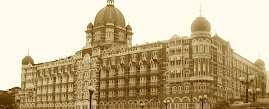
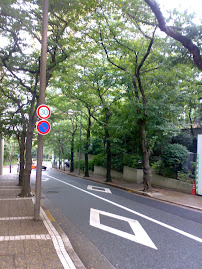
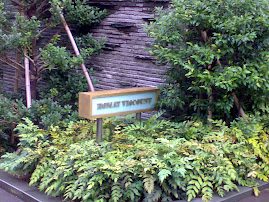
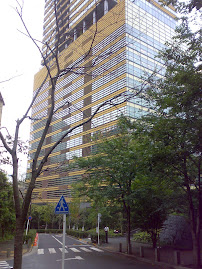

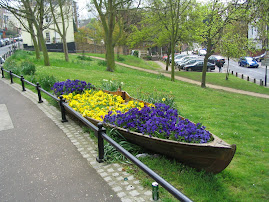
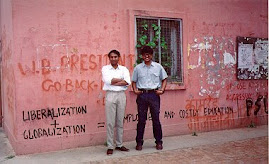
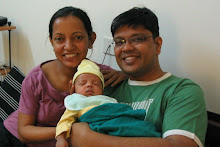
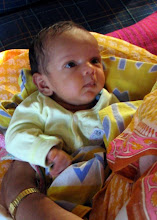
.jpg)
